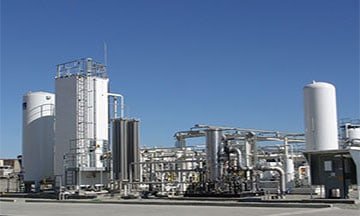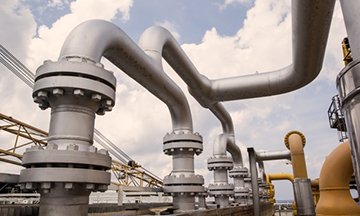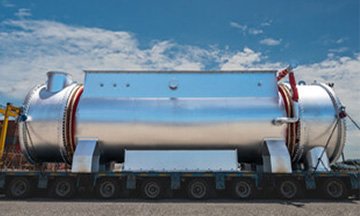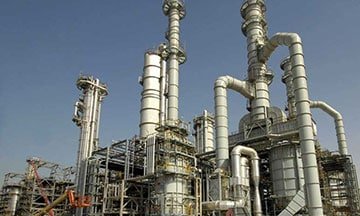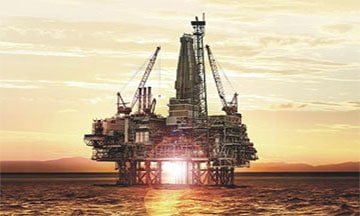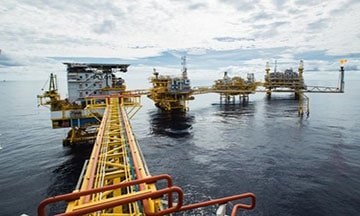Fundamentals of Well Log Interpretation Analysis and Formation Evaluation
| Date | Venue | Duration | Fees | |
|---|---|---|---|---|
| 13 May - 24 May, 2024 | Maldives | 10 Days | $9375 | Register |
| 20 May - 24 May, 2024 | Dubai | 5 Days | $4750 | Register |
| 17 Jun - 21 Jun, 2024 | Dubai | 5 Days | $4750 | Register |
| 08 Jul - 12 Jul, 2024 | Dubai | 5 Days | $4750 | Register |
| 16 Jul - 18 Jul, 2024 | Doha | 3 Days | $4100 | Register |
| 12 Aug - 16 Aug, 2024 | Dubai | 5 Days | $4750 | Register |
| 19 Aug - 23 Aug, 2024 | Barcelona | 5 Days | $5695 | Register |
| 09 Sep - 13 Sep, 2024 | Dubai | 5 Days | $4750 | Register |
| 09 Oct - 11 Oct, 2024 | Johannesburg | 3 Days | $4100 | Register |
| 21 Oct - 25 Oct, 2024 | Dubai | 5 Days | $4750 | Register |
| 18 Nov - 20 Nov, 2024 | Dubai | 3 Days | $3950 | Register |
| 16 Dec - 20 Dec, 2024 | Dubai | 5 Days | $4750 | Register |
Course Overview
The fundamental of well-log interpretation analysis and formation analysis is a training course that gives participants comprehensive training on good logging and interpretation. This Zoe course provides a broad understanding of the physical principles of the tools used in the logging process and will cover the whole interpretation workflow for the formation evaluation.
What is the purpose of well logging?
By completing the Fundamentals of Well Log Interpretation Analysis and Formation Evaluation course, all the people involved will know the fluid and rock characteristics, read and understand well-logs, explore, measure and run the surrounding corrections for the logging equipment. The course also covers the log analysis beginning with the lithology identification, share volume, water saturation, and porosity.
Also, the Fundamentals of Well Log Interpretation Analysis and Formation Evaluation training course covers quality assurance and quality control for the interpretation outputs and raw well-logs.
What are the methods of formation evaluation?
The people involved will identify the free water level and the reservoir fluid contacts. The delegates will understand the methods of formation evaluation. In this Zoe course, the core analysis learned will help lower the unreliability in the log interpretation, including fluid saturation, permeability, and porosity. This Zoe training strives to have a complete and in-depth basis for increasing knowledge in other specialized interpretation methods comprising well log information not trained here.
The course will cover the following areas;
- The tool’s physical rules and applications in the formation evaluation
- Examples of practical training examples from various reservoir types
- The primary evaluation applications used in reservoir characterization
- Different QC outputs and log analysis workflows
- Knowing the cross plots applications in the petrophysical workflow and identifying lithology
- Quality assurance for logging equipment measurements and complete quality control
Course Objectives
The primary objectives of this course are to empower the participants with the following: –
- Introduction of the participants to the basic ideas of the well-logging interpretation
- Give solid knowledge to interpret well-logs so that it makes decisions associated with good completion
- Give solid understanding to read well-logs, apply the needed surrounding corrections
- Help delegates perform well log interpretations to hydrocarbon-bearing edits, and communicate the results efficiently
- Give solid technical understanding to identify safety challenges such as handling radioactive sources
- Give solid technical understanding to do internet or library search and communicate the outcomes by an oral presentation.
- Log analysis calibration using various basic measurements
- Identifying the various reservoir fluid contacts and running pressure analysis
- Perform complete analysis in carbonate and clastic reservoirs
- Use of different quality control methods to validate logging information
- Know the physical rules of the primary logging equipment
Training Methodology
The Fundamentals of Well Log Interpretation Analysis and Formation Evaluation course will maximize different examples to allow a detailed study and know the petrophysical analysis method. Daily teachings will be greatly participative and interactive.
This Zoe course involves regular illustrations of the applications and hands-on exercises solved manually through Microsoft Excel. The delivery of this training will be by a PowerPoint presentation and also the use of video clips. Each participant will get required to come with a laptop for the practical examples worked in class. The attendees will also access printed training resources and the criteria they will view while studying the training. Like all Zoe courses, this analytical and evaluative course follows the ‘Learn-Do-Apply-Review’ model of performance competence.
Organizational Benefits
This course training will aid the attendees in empowering their understanding of various topics associated with log interpretation and reservoir characterization. With the professions undergoing this course, the company will benefit from the methods mentioned below;
- Analyse pressure information and evaluate pressure plots
- Interpret analogues and assess the legacy information for new exploration sections
- Run complete petrophysical evaluation for the logging procedures in the development and exploration of wells
- Identify the reservoir lithology and use various cross plots in the development analysis
- Complete QA/QC for the logging information such as wireline and LWD
- Identify safety problems such as handling radioactive sources
Personal Benefits
This course will aid the attendees in enriching their understanding of the responsibility of the log interpretation during the development and exploration campaigns. Furthermore, professionals opting for this course will benefit in the below-mentioned ways:
- Will get to run complete log analysis with detailed knowledge for the workflow through different cross plots.
- Identify the lithological variations and reservoir properties
- Higher exposure to quality management of the well-logs by either E-line and LWD
- To know the basic ideas of the well-log interpretation
- Show the skill to perform library or internet search and to communicate the findings by oral interpretation
- Show the skill to read well logs, apply the appropriate surrounding correction, and do well log interpretations to hydrocarbon-bearing
Who Should Attend?
- Geomodellers
- Geophysicists
- Oung subsurface professionals
- Reservoir engineers
- Geologists
- Log analysts or petrophysics
Course Outline
The course covers the following areas regarding Fundamentals of Well Log Interpretation Analysis and Formation Evaluation
Module 1: Introduction to Logging Conveyance and Logging Equipment
- Neutron logging and density equipment
- Pressure management and borehole fluid tools
- Invasion profile knowledge
- Variation between cased hole logging and open hole
- GR logging equipment
- Resistivity equipment
- Spectra GR
- Advanced logging equipment
- V shale Determination
- Wireline information versus LWD
- Calibration
- Gamma Ray
- Acoustics logging equipment
- Applications
- Anomalies
- Application
- Factor affecting SP
- Static spontaneous potential
- Pressure and temperature interpretation
- Auxiliary tools
- Log classification according to measured properties
Module 2: Formation Evaluation Workflows
- Evaluation using petrophysics software packages- application and concepts
- Practical exercises or examples using various carbonate reservoirs and well-log information in clastic
- Calibration of shale volume, water saturation, and porosity
- Mineralogical interpretation
- Clay versus shale-variation between the two workflows
- Deterministic analysis
Module 3: Field Life Cycle – Use Field Life to Find Log Analysis Roles
- Cut-off concepts
- Permeability modelling
- Reservoir potential detection techniques
- Determination of the fluid contacts
- Pressure plots
- Rock mechanical characteristics
- Petrophysical inputs for dynamic and static modelling
- Reservoir stresses
- Construction of the carbonate and clastic reservoirs
- Exploration versus growth petrophysics
Module 4: Saturation Determination-Log Interpretation Workflow
- Independent saturation equipment or primary measurements
- Impact of saturation exponent
- Cementation factor
- Archie parameters and Archie equations
- Clean pools versus shaly reservoirs
- Shaly sand saturation equations-saturation in shaly reservoirs
- True resistivity determination
- Pickett and Hingle plots
- Water resistivity calculation techniques
Module 5: Log Interpretation Workflow-Shale Porosity and Volume
- Gas impact on well-logs
- Correction of the matrix for dolostone and clastic rocks
- Sovereign porosity equipment and primary measurements
- Primary logs QA/QC, logs splicing, and depth matching
- Porosity compatible scales
- Porosity calculation by the various porosity equipment
- Applications information analysis for cross plots
- A shale volume measurement
- Distribution of shale in reservoir rock
Module 6: Sonic and Lithology in Well Log
- Compensation sonic
- Dipolar sonic
- Coherence maps of coherence
- Mechanical characteristics
- Porosity of sonic
- Determination of lithology
- Various shale deposition
- Lithology and porosity from well-logs
- The applications
Module 7: Parameters in Well-log Interpretation Analysis
- Cross plot uses
- Lithology identification
- Graphical analysis using cross plots
- Identification of saturation
- Archie equation
- Archie tools, N, M RW, M identification techniques
- Saturation determination exercises
- Dual water model
Module 8: Methods Used in Well Log Interpretation Analysis and Formation Evaluation
- Acquisition method for both LWD and wireless analysis
- Scan well-log determination areas that can produce hydrocarbon
- Covert fluid and drilling characteristics for temperature
- Primary well-log surrounding correction
- Archie parameters
- Log data
- Hydrocarbon saturation and water saturation
- Graphical techniques and pattern recognition
- Computation tools and also their characteristics of interest
- Completion and reservoir properties of the reservoirs of shale gas through primary logging techniques and more advanced calculations and the value of various measurements in an integrated understanding.
- Infer lithology from the logs
- Lithologic changes



